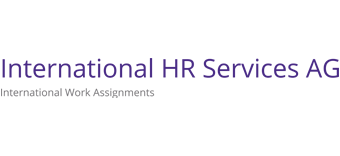New US income tax rates under Trump’s Tax Cuts & Jobs Act affect already the 2018 U.S. tax payment
Introduction: The U.S. tax system applies the ‘pay-as-you-earn’. Therefore, there is a direct withholding system set up by American companies to meet this tax withholding requirement. If one works in the U.S., the American employer is required to withholding taxes and submit these withholdings to the Internal Revenue Services. As most of our clients work for non-U.S. business companies, there is no possibility to implement such direct tax withholding. However, there is the estimated tax payment system that is available to meet this income tax payment requirement.
Who is subject to U.S. estimated tax? U.S. estimated tax is mandatory for U.S. taxpayers who are not subject to U.S. tax withholdings. This is equivalent to provisional tax in Switzerland. It is important to note that insufficient payment of the estimated tax will trigger ‘Underpayment Penalty’ (discussed below).
How to figure and when are estimated tax payments due? One will need to estimate his/her U.S. income tax based on his expected taxable income, tax liability and credits determined for the period. Payments are due on a quarterly basis with the following due dates:
Estimated tax for the period: Due date:
01 Jan to 31 March 15 April
01 April to 31 May 15 June
01 June to 31 August 15 September
01 September to 31 December 15 January of the following year
Underpayment penalty: Estimated tax needs to be paid on the above-mentioned due dates as income is earned for the period covered. Non-payment or insufficient payment may arise to Underpayment Penalty. In general, one can also use as what we regard as the ‘Safe Harbour’ rule. Under the safe-harbour rule, one can use the smaller of:
- 90% of the current year’s tax, or
- 110% of the prior year’s tax.
How does the new rate impact the 2018 estimated taxes? There have been small reductions to 2018 personal income tax rates as brought about the by the Tax Cuts & Jobs Act of 2017. One should bear this in mind these new tax rates in calculating the 2018 estimated tax or prior to making the 4th quarter estimate tax payment.
It is also important to note that the TCJA tax rates sunset on December 31, 2025. This means that the tax rates will revert to the old rates unless Congress extends them. Please refer to the chart below for 2018 personal income tax rates.
| Rate | Single | Head of Households | Married Filing Jointly | Married Filing Separately |
| 10% | Up to $9,525 | Up to $13,600 | Up to $19,050 | Up to $9,525 |
| 12% | $9,526 to $38,700 | $13,601 to $51,800 | $19,051 to $77,400 | $9,525 to $38,700 |
| 22% | 38,701 to $82,500 | $51,801 to $82,500 | $77,401 to $165,000 | $38,701 to $82,500 |
| 24% | $82,501 to $157,500 | $82,501 to $157,500 | $165,001 to $315,000 | $82,501 to $157,500 |
| 32% | $157,501 to $200,000 | $157,501 to $200,000 | $315,001 to $400,000 | $157,501 to $200,000 |
| 35% | $200,001 to $500,000 | $200,001 to $500,000 | $400,001 to $600,000 | $200,001 to $300,000 |
| 37% | over $500,000 | over $300,000 | over $600,000 | over $300,000 |
How are the TCJA tax rates compared to the previous years?
Compared to 2017 tax rates, almost all of the rates within each tax bracket was reduced with the exception of the 10% and 35% brackets. The top rate has also been reduced from 39.6% to 37.0%.
| 2017 | 2018 | |
| Brackets | Rates | TCJA Rates |
| 1 | 10% | 10% |
| 2 | 15% | 12% |
| 3 | 25% | 22% |
| 4 | 28% | 24% |
| 5 | 33% | 32% |
| 6 | 35% | 35% |
| 7 | 39.6% | 37.0% |
Summary: Because of the tax rate changes become effectiv this year, it is recommended to establish an estimate beforehand.
Please don’t hesitate to contact International HR Services Ltd., Teresa Sy-Him at t.sy-him@internationalhrs.com, if you need assistance in calculating your 2018 4th quarter estimate tax payment which is due by 15 January 2019. If none has been paid so far, we highly recommend making a catch-up payment. We can also assist in estimating your 2018 extension payment which is due by 15 April 2019.

